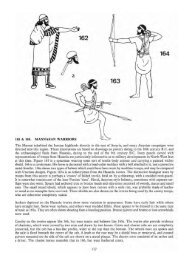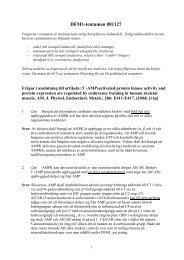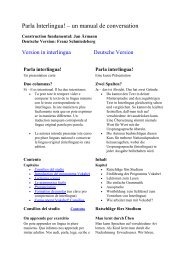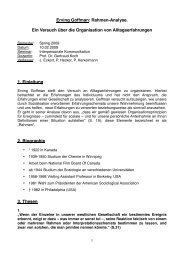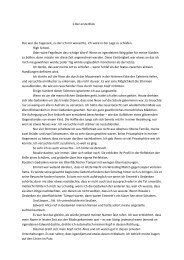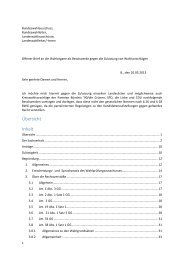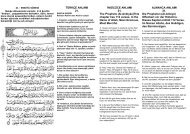lwIP - A Minimal TCP/IP implementation - Wikia
lwIP - A Minimal TCP/IP implementation - Wikia
lwIP - A Minimal TCP/IP implementation - Wikia
You also want an ePaper? Increase the reach of your titles
YUMPU automatically turns print PDFs into web optimized ePapers that Google loves.
7 NETWORK INTERFACES<br />
next<br />
prev<br />
used = 1<br />
next<br />
prev<br />
used = 0<br />
next<br />
prev<br />
used = 1<br />
Figure 4. The memory allocation structure.<br />
struct netif {<br />
struct netif *next;<br />
char name[2];<br />
int num;<br />
struct ip_addr ip_addr;<br />
struct ip_addr netmask;<br />
struct ip_addr gw;<br />
void (* input)(struct pbuf *p, struct netif *inp);<br />
int (* output)(struct netif *netif, struct pbuf *p,<br />
struct ip_addr *ipaddr);<br />
void *state;<br />
};<br />
Figure 5. The netif structure.<br />
interface is configured by a human operator at runtime. The name is set by the device driver and<br />
should reflect the kind of hardware that is represented by the network interface. For example, a<br />
network interface for a Bluetooth driver might have the name bt and a network interface for IEEE<br />
802.11b WLAN hardware could have the name wl. Since the names not necessarily are unique,<br />
the num field is used to distinguish different network interfaces of the same kind.<br />
The three <strong>IP</strong> addresses ip addr, netmask and gw are used by the <strong>IP</strong> layer when sending and<br />
receiving packets, and their use is described in the next section. It is not possible to configure a<br />
network interface with more than one <strong>IP</strong> address. Rather, one network interface would have to be<br />
created for each <strong>IP</strong> address.<br />
The input pointer points to the function the device driver should call when a packet has been<br />
received.<br />
A network interface is connected to a device driver through the output pointer. This pointer<br />
points to a function in the device driver that transmits a packet on the physical network and it is<br />
called by the <strong>IP</strong> layer when a packet is to be sent. This field is filled by the initialization function<br />
of the device driver. The third argument to the output function, ipaddr, is the <strong>IP</strong> address of<br />
the host that should receive the actual link layer frame. It does not have to be the same as the<br />
destination address of the <strong>IP</strong> packet. In particular, when sending an <strong>IP</strong> packet to a host that is<br />
not on the local network, the link level frame will be sent to a router on the network. In this case,<br />
the <strong>IP</strong> address given to the output function will be the <strong>IP</strong> address of the router.<br />
Finally, the state pointer points to device driver specific state for the network interface and<br />
6





